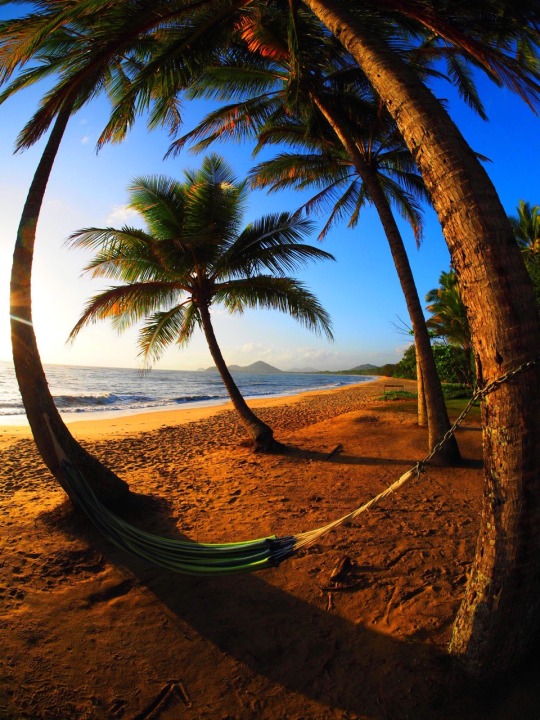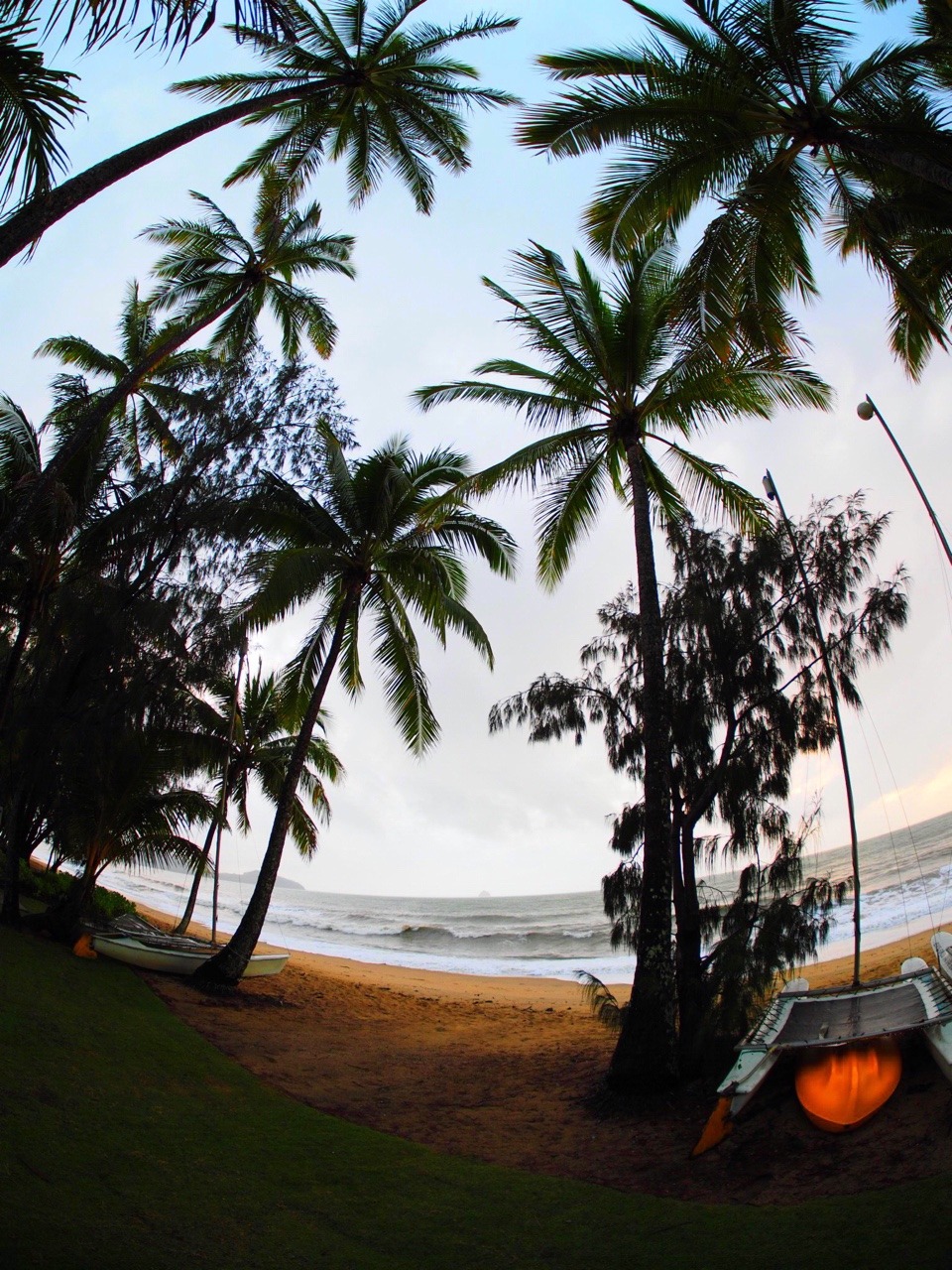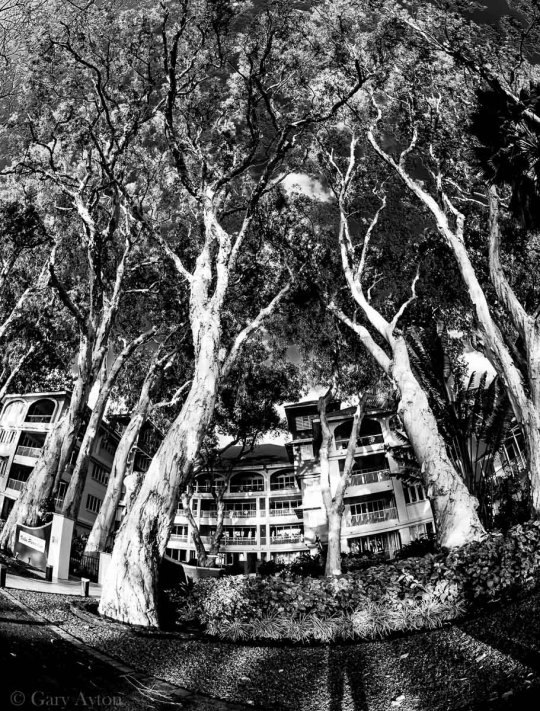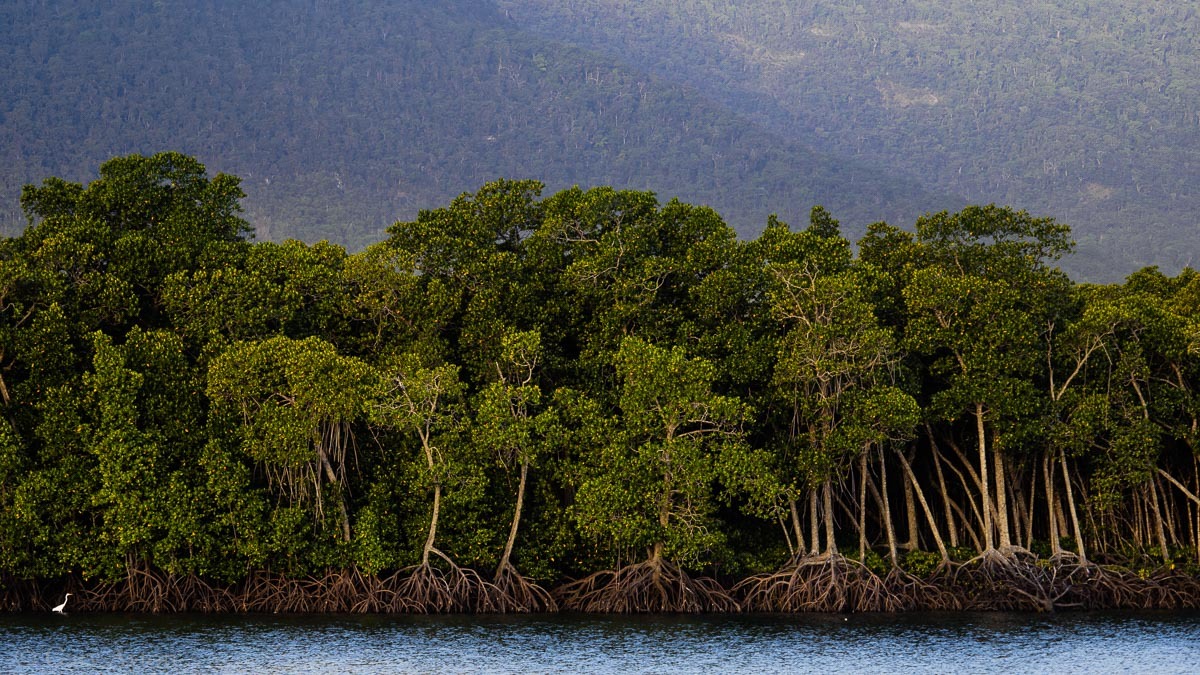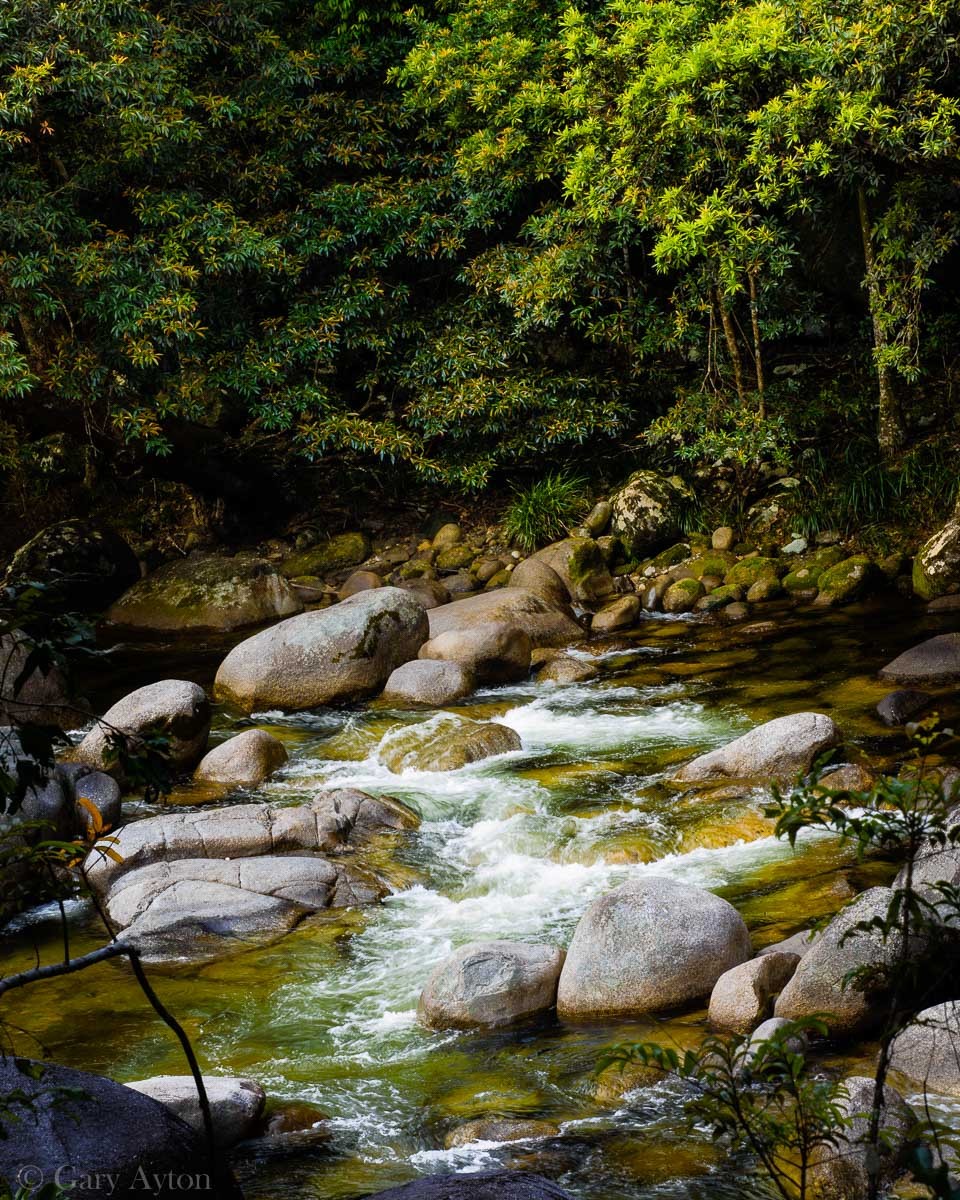Continuing on from my holiday tips for the wet tropics of north Queensland and the Atherton Tablelands, this post explores the Palm Cove region north of Cairns.
Palm Cove is one of the most picturesque beaches with its lovely palm trees and towering melaleucas which line the esplanade which separates the beach from the little village which is filled with accommodation options and restaurants.
In October, it was a relatively quiet, friendly and relaxing village and surprisingly, the accommodation apartments do not use insect screens and we had no issues from mosquito bites even though we left the windows open much of the time – I guess the council keeps a tight control on insect populations in the area.
I stayed at Paradise on the Beach apartments and had the pleasure of having a unit which overlooked the beach and had a large double spa bath and kitchenette, although the downside is that it was close to a children’s playground over the road, and at night it was noisy from the patrons of the bar below – if these are not an issue for you, then it was a lovely way to relax and enjoy the beach.
As with all the beaches in the wet tropics, there is a small risk of crocodile attacks if you swim or walk near the edge, although this is much more likely near estuaries and very few if any have occurred on the actual Palm Cove beach.
A bigger risk from Nov-May is the potentially lethal jellyfish stingers, and thus one is advised to only swim within the patrolled swimming area within the stinger nets.
The beaches face east and so sunrise walks are a must and a perfect way to start the day before the sun gets too hot.
Palm Cove with the Samyang 7.5mm fisheye lens:
A fisheye lens is really the only way to capture the palms and melaleucas which give the beach its character. I used the inexpensive manual focus only Samyang 7.5mm f/3.5 fisheye lens on Micro Four Thirds Olympus OM-D E-M1 and E-M5 cameras, although one could use any fisheye lens including the lovely new Olympus mZD 8mm f/1.8 lens.
The towering ancient melaleucas:
Palm Cove as a base to explore
Palm Cove is perfectly situated to explore the region as it is within 20min or so drive from Cairns, the airport and most of the local attractions.
A must do, is visit the Hartley’s Crocodile Adventures which is about 20-30min drive to the north. You need to spend at least 2-3 hours here learning about crocodiles and other tropical wildlife including the southern cassowary bird and snakes. They run a commercial crocodile farm which you can attend a guided tour to learn more about crocodiles, or go on a short cruise in the river and watch them feed crocodiles with the crocodiles jumping 1-1.5m out of the water.
The snake handling and crocodile attack demonstration events are well worth attending, but perhaps the best is indulging in a very tasty crocodile salad lunch at the cafe which I would highly recommend!
Other attractions in the region include:
- Cairns Tropical Zoo
- Cairns Night Zoo
- boat tours to Green Island and the Great Barrier Reef from Cairns for snorkelling and scuba diving
- Kuranda tourist village
- access by road or via Skyrail Rainforest Cableway or Kuranda Scenic Railway
- tourist-oriented shopping markets (close around 3pm)
- Australian Butterfly Sanctuary
- Birdworld Kuranda
- bushwalks and Barron Falls
- Port Douglas tropical beach and shopping village, and boat tours to northern parts of the Great Barrier Reef for snorkelling and scuba diving
- Mossman Gorge – a lovely rainforest with a beautifully clear stream with granite boulders just north of Port Douglas – a fisheye lens is also handy here!
- Daintree rainforest wilderness and Cape Tribulation (~2hrs north) – see my next post
- Babinda Kayaks south of Cairns
- Atherton Tablelands
Pics of the region using the Olympus OM-D and pro zoom lenses:
Walshs Pyramid Hill (the highest freestanding natural pyramid in the world) south of Cairns at sunset from a boat on a “sunset cruise”:
Mangroves in Cairns at sunset from a boat on a “sunset cruise”:
Mangrove beach near Port Douglas:
Mossman Gorge:
Rainforest stinging tree (Dendrocnide moroides) leaves – the leaves, stem and fruit are covered in tiny silica hairs which inject neurotoxins causing severe pain which may last for several days and then recur over months! Even the dead leaves can sting and worse can release hairs when disturbed which can then be inhaled! (I presume this is one of them! Olympus mZD 40-150mm f/2.8 PRO lens on Olympus OM-D E-M1 camera):

